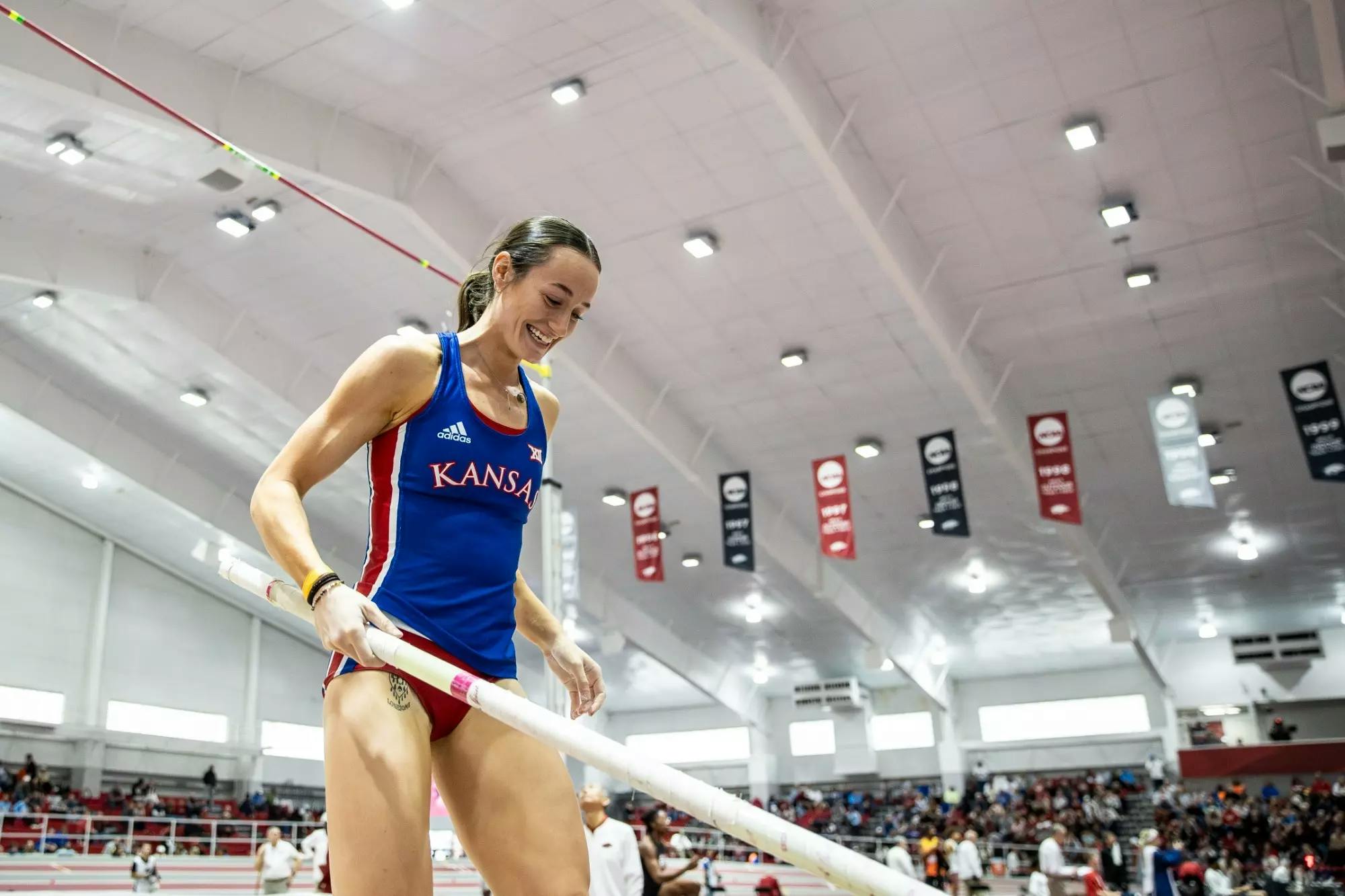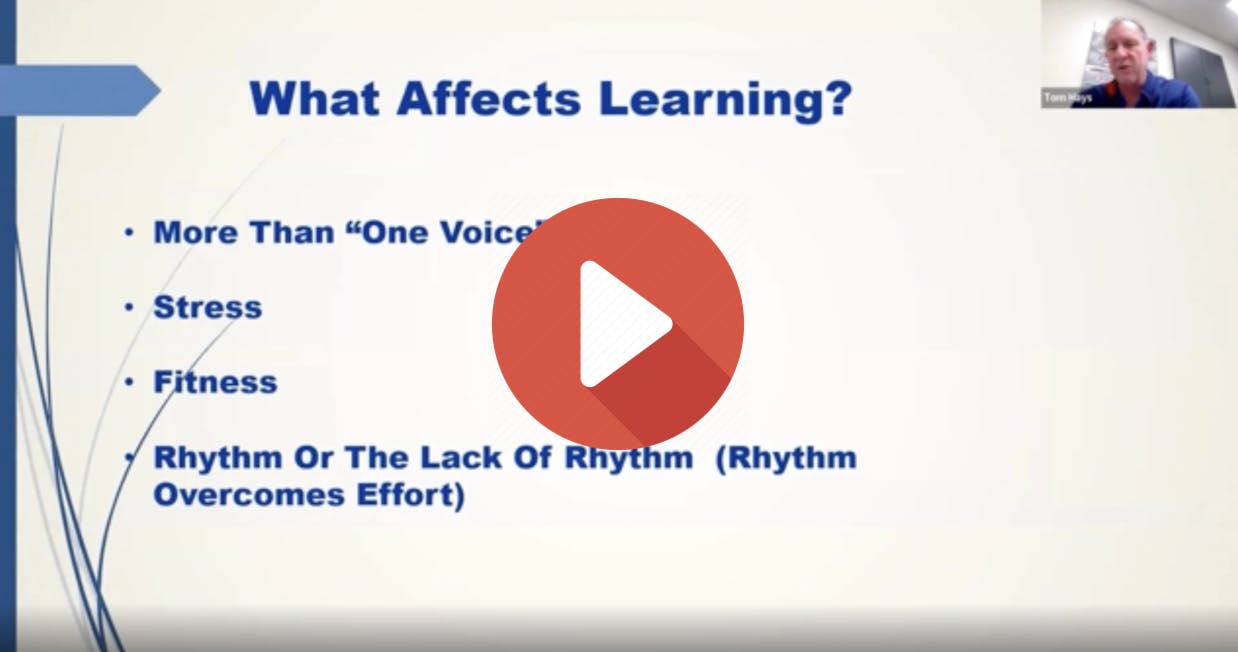Featured courses
- The Ultimate Guide to Coaching Track and Field by Jackson Chlebowy
- How TCU Coach Khadevis Robinson Builds Mental Toughness for Big 12 Track by William Markey
- Two Points of Focus When Coaching and Training Hurdles by Grant Young
- Four Keys to Maximize Winning Potential in a 400m Race by Grant Young
- Three Lessons Every Distance Running Coach Should Know by Grant Young
- Olympic Medalist Jasmine Moore’s Triple Jump Approach Technique Keys by Grant Young
- Build Strong Triple Jump Foundations with 3 Key Drills by William Markey
- Two Cues to Help With Track and Field Relay Handoffs by Grant Young
- Four Shot Put Drills to Help Develop Your Athletes by Grant Young
- Three Training Tips For Coaching 400m Runners by Grant Young
- Four Tips for Teaching the Javelin Throw by Grant Young
- 3 Pole Vault Check Points From Legendary Kansas Coach Tom Hays by Grant Young
- Two Valuable Hammer Throw Training Tips by Grant Young
- 3 Must-Try Offseason Shot Put Drills by William Markey
- Four Essential Tips For Coaching Track Relays and Sprints by Grant Young
- Florida Gators Coach Nic Petersen’s Two Keys for Teaching the Triple Jump by Grant Young
- Three Effective Drills for Improving the Long Jump by Grant Young
- Three Drills for Sprinters That Track Coaches Swear By by Grant Young
- Four Pole Vault Drills All Track and Field Coaches Should Know by Grant Young
- Explosive Track and Field Training to Level Up This Summer by Tyler Rathke
- Throwing Secrets: The Entry by Tyler Rathke
- How to Find an Endurance Athlete’s Proper Training Pace by Grant Young
- The Technique Behind Mykolas Alekna’s Discus World Record by Grant Young
- How to Build a Sprinter's Training Regimen by Grant Young
- How to Teach the Glide Shot Put by Grant Young
- Three Hurdle Drills All Track Coaches Should Know by Grant Young
- How Distance Running Coaches Can Get the Most Out of Their Athletes by Grant Young
- The Technique Behind Mondo Duplantis' Pole Vault World Record by Grant Young
- How to Coach Weightlifting For Increased Speed and Acceleration by Grant Young

3 Pole Vault Check Points From Legendary Kansas Coach Tom Hays
- By Grant Young
For nearly four decades, Tom Hays has been the quiet architect behind the University of Kansas's remarkable pole vault coaching dynasty. His journey from promising athlete to legendary coach embodies the perfect marriage of technical precision and psychological insight that defines elite coaching.
Hays's approach begins with fundamentals. Early in his career, he recognized that the pole vault isn't merely about raw athleticism but requires a methodical building of skills. He developed a progressive teaching system that breaks down the complex movement into learnable segments—grip positioning, approach rhythm, plant technique, swing mechanics, and finally, the commitment to inversion.
What distinguishes Hays is his embrace of both science and artistry. In the 1990s, when biomechanical analysis was still emerging, he was already filming his vaulters, analyzing frame-by-frame movements to identify inefficiencies invisible to the naked eye. Yet he balances this analytical rigor with an intuitive understanding of how each athlete learns differently.
"The pole vault is physics in motion," Hays often tells his athletes, "but the vaulter is human." This philosophy informs his individualized coaching style. For some athletes, he focuses on technical cues; for others, he cultivates the psychological fortitude needed to hurl oneself nearly twenty feet into the air.
His training facilities at Kansas have evolved from basic pits to high-tech laboratories featuring specialty equipment and computer modeling. But Hays maintains that the most valuable coaching tool remains attentive observation—watching how an athlete responds to instruction, adapts to challenges, and demonstrates readiness for progression.
The results speak volumes: dozens of All-Americans, multiple national champions, and Olympic qualifiers, along with his securing the nation’s No. 1 men’s pole vault recruit for three consecutive years at one point in his career, ensuring continued excellence in Kansas’ jumps program. More impressively, many of his former athletes have become successful coaches themselves, spreading his methodology throughout the sport.
Coach Hays’ ‘Tom Hays - The Art of Coaching the Pole Vault’ clinic explains the art of coaching this challenging sport and offers insights into athlete evaluation, coaching technique improvement, and simplifying complex movements. He emphasizes the importance of self-evaluation, clear communication, and eliminating unnecessary elements.
We have pulled some lessons from Coach Hays’ clinic and included them for you below.
3 Check Points to Look For

At one point in his clinic, Coach Hays discusses three check points to look for what an athlete is executing their pole vault.
Check point number one is that if the athlete is right-handed, when they land on their right foot in the step before takeoff, the hand is going to be somewhere around the runner’s forehead.
Most athletes have a tendency to have their hand closer to neck height, which is about eight inches away from where they should be and which will make them late in their plant.
Thankfully, this is a very easy thing to spot when watching film as it will be extremely apparent. But there are other nuances, such as the speed and rhythm are also important to diagnose and get right.
The second check point is when the runner lands on their takeoff foot, their top arm is extended close to straight. While many runners have a completely straight arm (which is okay and which Coach Hays teaches his athletes), Coach Hays explains that it’s also all right to have a slight bend if that’s what the athlete feels most comfortable doing.
The top arm should be up over the runner’s head in a high position, regardless of how bent the arm is.
The third and final check point is that the lead knee (or the drive knee) is before the takeoff foot leg before there’s pressure or bending in the pull phase. Coach Hays then discusses how, while some people don’t drive their knee correctly at this point, their hips are rising enough where it does the same mechanical work instead.
“The more pole speed you have, the more potential fly-away speed you’ll have,” Coach Hays said. He then quoted a coach who said, “Energy in, energy out.” In other words, the more energy and speed you can put into the takeoff, the more energy you’re going to get out of the pole.
Coaching Athleticism

When it comes to coaching the pole vault, Coach Hays says that it’s important for an athlete to only have one voice they need to listen to, instead of multiple coaches telling them what to do. In order to ensure this, a coach will want to be very direct and specific about what they want their athlete to be working on on any given day.
He also said that stress can be a good thing when it comes to an athlete learning. However, it’s important to understand the difference between good stress and bad stress. Good stress is competition between peers or opponents, or working hard in the weight room or on the track. Bad stress can be external pressures that a coach puts on their athlete.
He also discusses that if a coach puts a camera on their athletes while training so that they know there will be film of them, they’ll be more inclined to focus on their mechanics and develop good habits. This is another good type of stress.
Finally, a tired athlete doesn’t learn very fast, so fitness needs to always be a focal point. And Coach Hays adds that rhythm (or a lack of rhythm) always overcomes effort.




